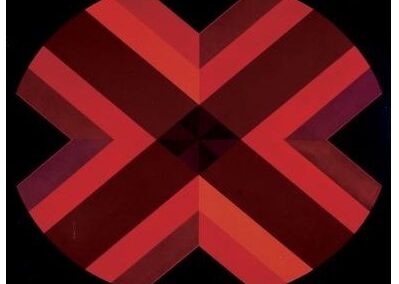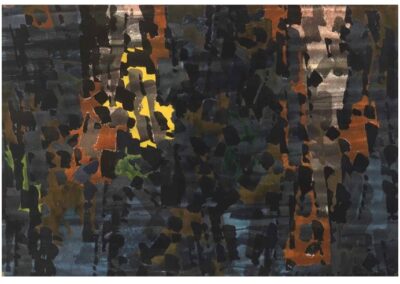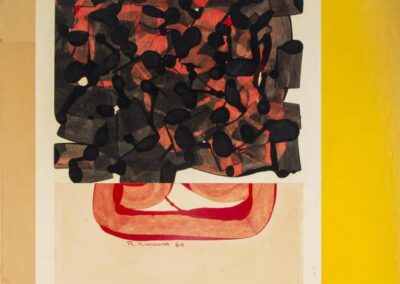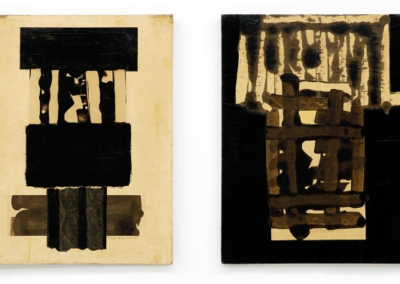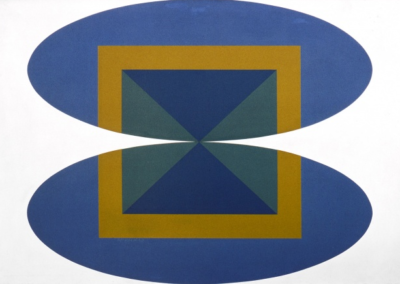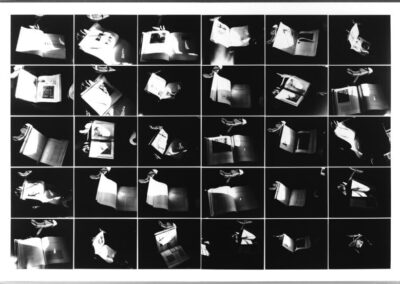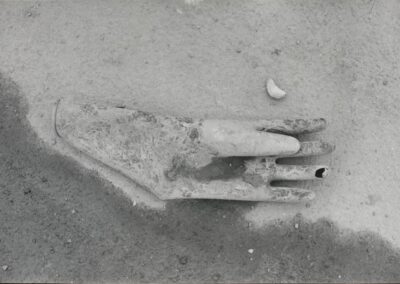Our next Artist You Need To Know was genuinely multidisciplinary, working in images as well as words. Roy Kiyooka worked in the diverse media of painting, photography, film, music, sculpting and was an acclaimed poet and writer, as well. Originally from Moose Jaw, Saskatoon, he attended the Provincial Institute of Technology and Art,now known as the SAIT. However, he was also deeply influenced by the eight months he spent (in 1956) in San Miguel de Allende in Mexico, experiencing the great Mexican muralists Rivera, Orozco and Siqueiros. When he returned to Canada, he began teaching at what would become the University of Regina. Kiyooka was also one of the significant participants in the Emma Lake Artists’ workshops, in Saskatchewan in the 1950s, famously attended by Barnett Newman (who once proclaimed ‘Who the hell is Emma Lake, and where the hell is Saskatchewan?’).
-

Untitled, N.D.
-

Prairie Sky, 1957
-

Arma, 1964
-

Emma Lake, 1958
-

Untitled Abstract, 1958
-

Nekton No. 2, 1964
Undoubtedly influenced by this, in the 1960s Kiyooka’s work was primarily focused upon abstract painting. His images of this period are “researches into the harmony of values, rather than pure colours. He is involved in configurations that play curved forms against each other-creating convex/concave tensions on orthogonal planes that affirm the surface. The ellipsoid forms feign volume by their placement and can be read as positive or negative. Kiyooka’s work reveals a concern for a familiar or literary significance within the language of abstract art particularly colour-painting and op-art.” (Fernande Saint-Martin)
But in the latter half of that decade, Kiyooka branched out impressively: becoming a major player in Vancouver’s cultural scene (including involvement with the artist run centre Intermedia), Kiyooka worked in the more conceptual spheres of photo based art and words. This shift has been described as how “Kiyooka began to reject the Greenbergian modernist aesthetic that informed his earlier paintings, he increasingly took up performance, photography, film, and music. He saw the position of the artist as being in opposition to the institutions of art.”
-

Bast, 1964
-

Aleph #2, 1964
-

Untitled, 1963
-

Convergence (The Bridge), 19699
-

Emma Lake, 1960
-

The Bridge, 1963
His poetry was published in several anthologies. His book The Pear Tree Pomes (illustrated by a past featured artist, David Bolduc) was short-listed for a Governor General’s award in 1987. Mothertalk: Life Stories of Mary Kiyoshi Kiyooka, a series of interviews with his mother, was published posthumously, in 1997, as was Pacific Windows: Collected Poems of Roy Kiyooka.
Significant highlights of his visual arts career include the Bienal São Paulo (1966), and how in 1969 a sculptural work was commissioned for the Canadian Pavilion at Expo 70 in Osaka (It’s notable that since his visit to Japan in the late 1960s, Kiyooka had begun to incorporate into his own practice more of his Japanese heritage, as his parents had come to Canada as immigrants from there. In a similar vein, his – and his family’s – experiences of racism towards Japanese Canadians broke ground further explored by writers like Joy Ogawa. Kiyooka was an important voice as Canada began to acknowledge Japanese Canadian Redress, in the 1980s. This difficult history often was a subtext of his works).
A retrospective was mounted at the Vancouver Art Gallery (1975), and he was recognized with the Order of Canada (1978) for both his cultural achievements, and his teaching (Kiyooka’s influence was arguably nationwide, as he taught at Concordia University, NSCAD University and the University of British Columbia – the latter nearly until he passed, in 1994).
His work can be found in the following collections: Agnes Etherington Art Centre, Alberta Foundation for the Arts, Canada Council Art Bank / Banque d’art du Conseil des arts du Canada, Art Gallery of Greater Victoria, AGO – Art Gallery of Ontario, Art Gallery of York University, Museum London, MAC Musée d’art contemporain de Montréal, National Gallery of Canada, MacKenzie Art Gallery, University of Alberta and The Vancouver Art Gallery, Vancouver, B.C..


